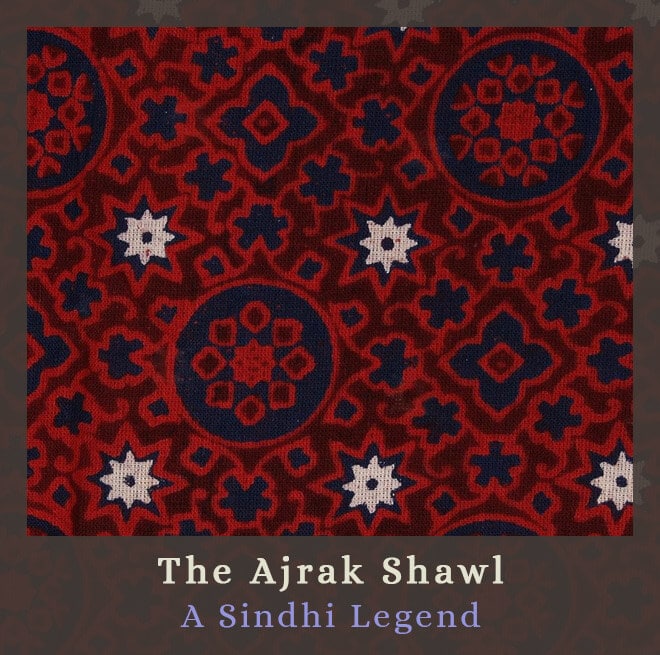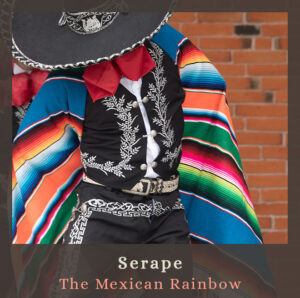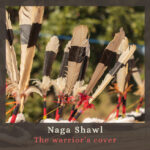As a fashion designer and admirer, I came across the Ajrak designs tons of times, but only very recently I found out their origin!
In this article, I will share all the fascinating details I’ve learned about those exquisite ancient shawls – Let’s dive in!
What is Ajrak Shawl?
The Ajrak Shawl is a Sindhi wrap that displays unique designs and patterns made using block printing with stamps, often in a combination of maroon, deep blue, and small touches of black and white.
The Ajrak shawl is native to Sindh, a southern Pakistani province and one of the oldest civilizations in the world. It’s an integral part of the culture, and it’s worn by both men and women. The Sindhis often give the Ajrak shawl as a present to their guests, an act that signifies dignity, pride, and respect.
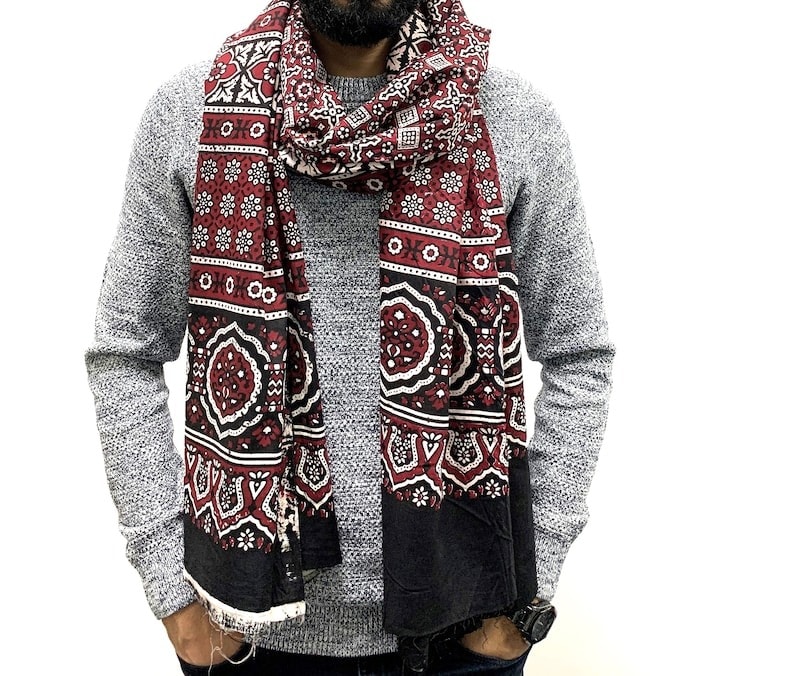
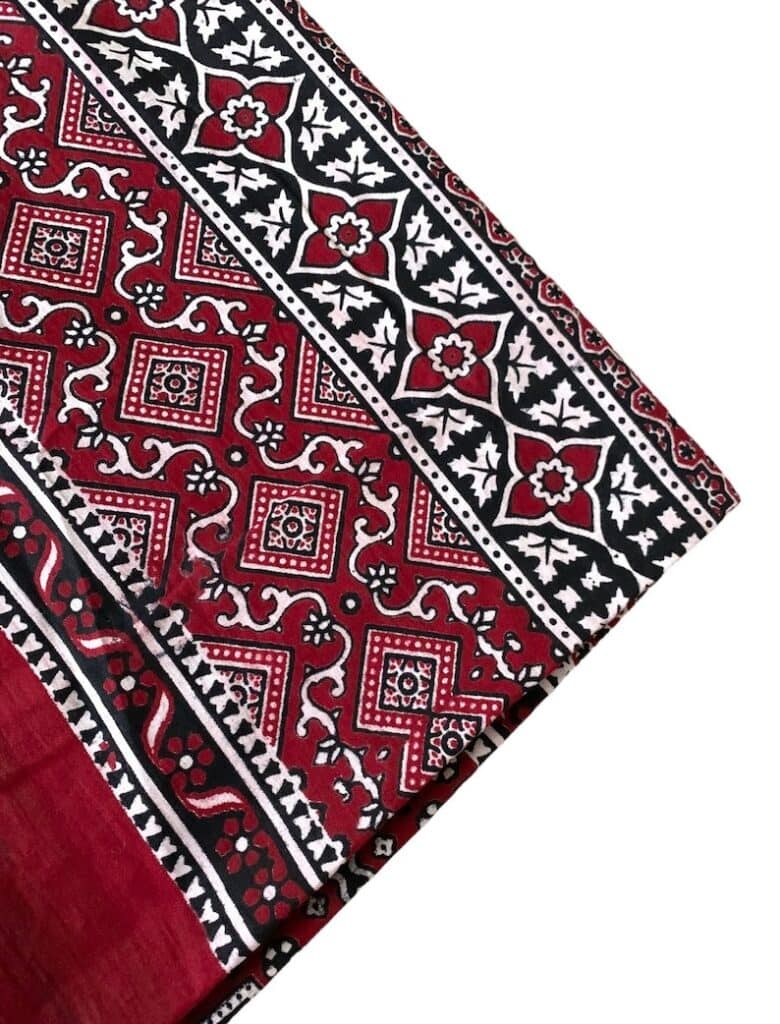
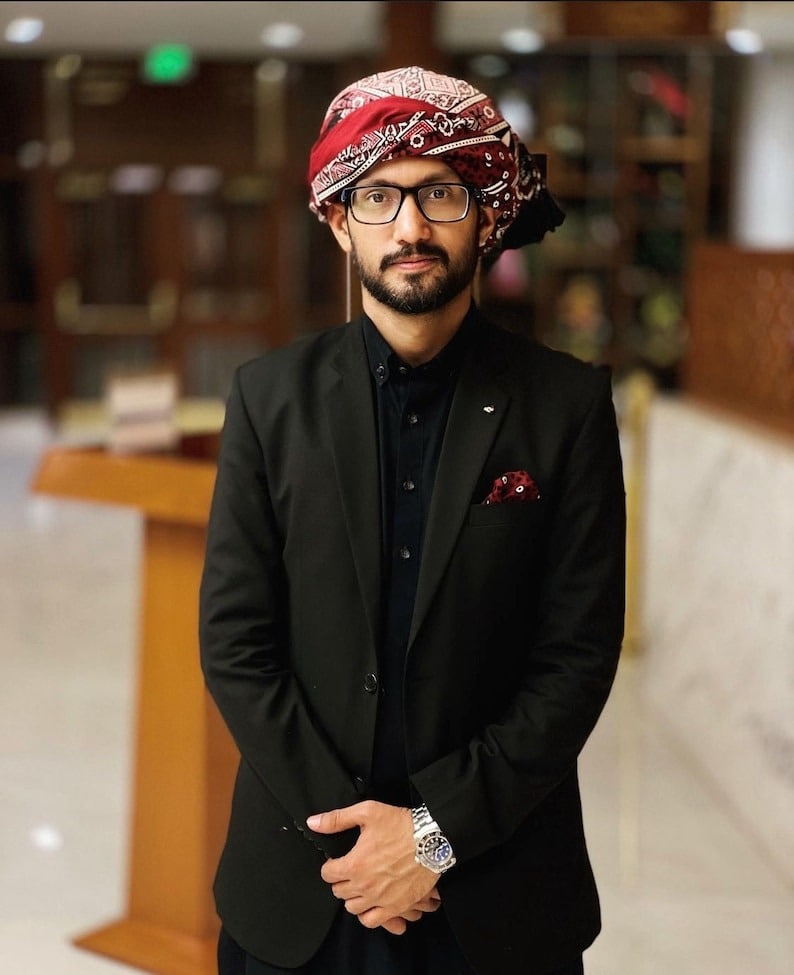
The Ajrak Pattern
Ajrak’s geometry comes from woodblock printing, where dye is transferred to the fabric by pressing wooden blocks with carved geometric shapes onto the textile.
The Ajrak pattern shows many small duplicated details of geometric ornaments, presenting mainly circles with other shapes between them. The outcome is a homogeneous captivating printed shawl. These patterns and shawls have a long history in the Sindh tradition, and probably the most popular use of Ajrak can be seen on the famous Sindhi cap (Topi). The beauty of the ajrak made it become a popular print in fashion and part of home decor in windows, bed covers, maps, and more!
Though the small circles patterns are the most common, the Ajrak design has numerous patterns and styles. The different types developed in variable regions in Pakistan include Sindhi Ajrak, Kutchi Ajrak, Sulemani Ajrak, Barmeri Ajrak, Balochi Ajrak, and there are probably, many more.
Making & Styles of Ajrak
The Ajrak creation process is extremely intricate, involving 21 steps (!) that have been passed down from generation to generation for the last 5,000 years.
Traditional artisans utilize local materials (some might surprise you) to create the stunning Ajrak designs.
I found this captivating video from Business Insider India that shows the authentic process step by step. It presents Imran, a genuine workshop owner who is proud to preserve the Sindhi tradition through Ajrak—Highly Recommended!
Here’s a brief version of the process:
How an Ajrak Comes Into Life
Making the Ajrak shawl is amazingly demanding work; every single step is done by hand, so it can take almost a month to make one shawl!
- It all starts with stiff pure cotton called Kura. Workers take the cloth to a nearby stream for its very first wash. After washing, they repeatedly slap the cloth against the river banks to squeeze out the excess water.
- Then Gessy (Camals dung!) is mixed with water, baking soda, and mustard oil to form a paste called Saaj. That’s what gives Ajruk its musty smell and eventually makes the colors pop. The fabric is dunked into the saaj, then coiled, again and again to soak up the paste.
- The cloth is soaked and dried at least four times before returning to the river for another wash. During the whole process, they never let the fabric fully dry. The artist says that even after 100 years, the smell stays!
- After the raw fabric is treated for four to five days, it’s finally ready to be stamped. In an unbelievably precise work, the artisan fills the outline (Chur) with black color on all pieces in the batch. In this step, the Ajrak starts to receive its signature look.
- Then a worker stamps an herbal paste all over the cloth so that dried cow dung can stick to the fabric. This process protects the sections of the Ajrak that shouldn’t be dyed.
- Now the fabric is ready for its first dye. Each shawl is slowly dipped into a bubbly dye until it turns a deep navy.
- The soaked sheets are then laid in the sun before they’re rewashed.
- The next stage demands an intense fire. A Bhatti, a clay oven, is filled with water, alizarin pigment, and an herb known as Sakun to make the Ajrak catch all the colors. The Ajrak is repeatedly dipped into the boiling water. Eventually, all pieces are left to simmer for at least an hour.
The pot is checked regularly to ensure each piece is fully submerged; this stage is when the patterns start to appear.
- The following day, the ajrak shawl is rewashed in the river.
- The fabric is dyed, block printed, and washed again to enhance the colors. A skilled block printer can finish 10 to 12 pieces in a day. Each step leaves its mark. The stark crimson is now perfectly contrasting the indigo, black and white.
- After all these stages, the result is a magnificent piece of Ajrak fabric.
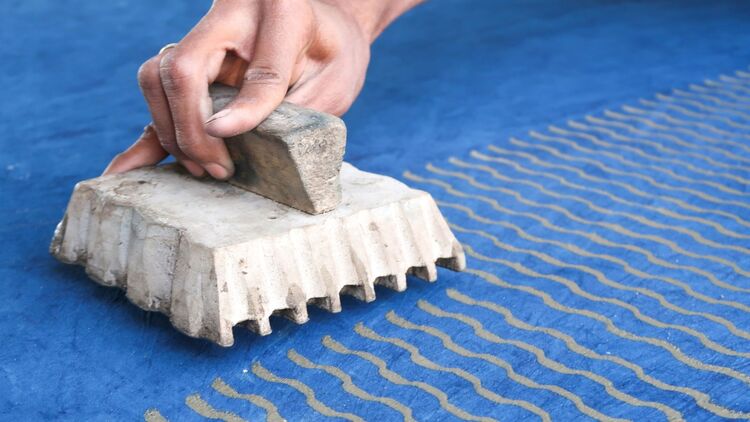
The History of Ajrak
It seems that the ajrak shawl originated around 2500 BC – 1500 BC and was a prestigious part of Sindhi attire.
It is evidenced by an ancient statue of the King-Priest found in the ancient city of Mohenjo-Daro, Sindh, Pakistan. As you can see in the image below, the King-Priest is wearing a shawl adorned with a red trefoil pattern.
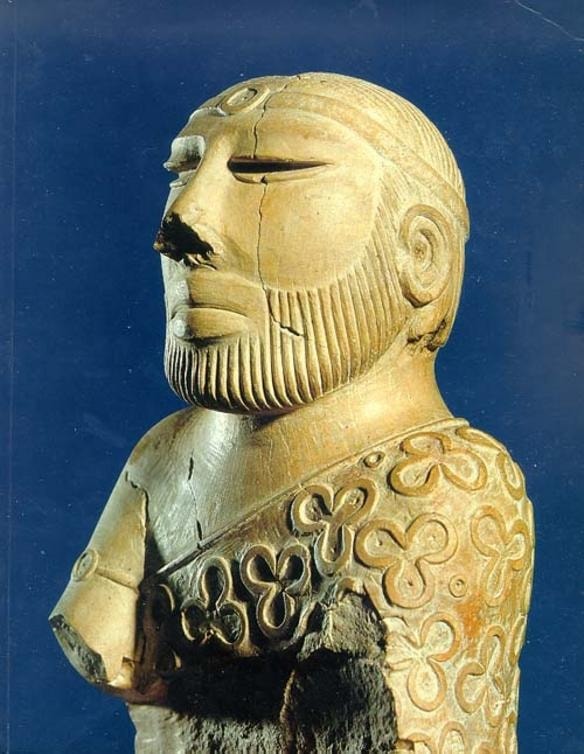
The ancient use of the trefoil symbol signifies three sun disks representing the unity of the gods of the Sun, water, and earth. This symbol that still used on Ajrak today.
Ajrak designs also played a part in Egypt’s History:
Historians have found evidence that the Egyptians used to wrap their precious mummies in Ajrak cloth, which was imported from Sindh and was called ‘Sindhin’. This practice highlights how highly valued the ajrak textile was even then.
The historical significance of the Ajrak shawl is also shown by the fact that the Persian King Dara (first) was presented with an Ajrak during his coronation ceremony around 500 BC.
The Present & Future of The Ajrak:
Today, Ajrak shawls made by the old way are sold throughout Pakistan and India, but Sindh is still the heart of the craft. About a hundred workshops in that part of the province still make Ajrak the traditional way.
But the glory days of this ancient craft are long gone since cheaper mass-produced shawls have taken over the market. Many people can’t even tell the difference between an authentic and an industrial Ajrak, but there are some signs:
Real Color Never Fades
Shafqat Ali, an artist seen in the video, says that machine-made Ajrak tends to lose its color, while the authentic ones can get old and rip, but they will never lose their color.
Imran, the workshop owner seen in the video and an Ajrak artist himself, says that their Ajrak keeps its colors because they don’t use any chemical dyes and that all of the spices they mix in come from all-natural herbs. He emphasizes that they are not using even one chemical product.
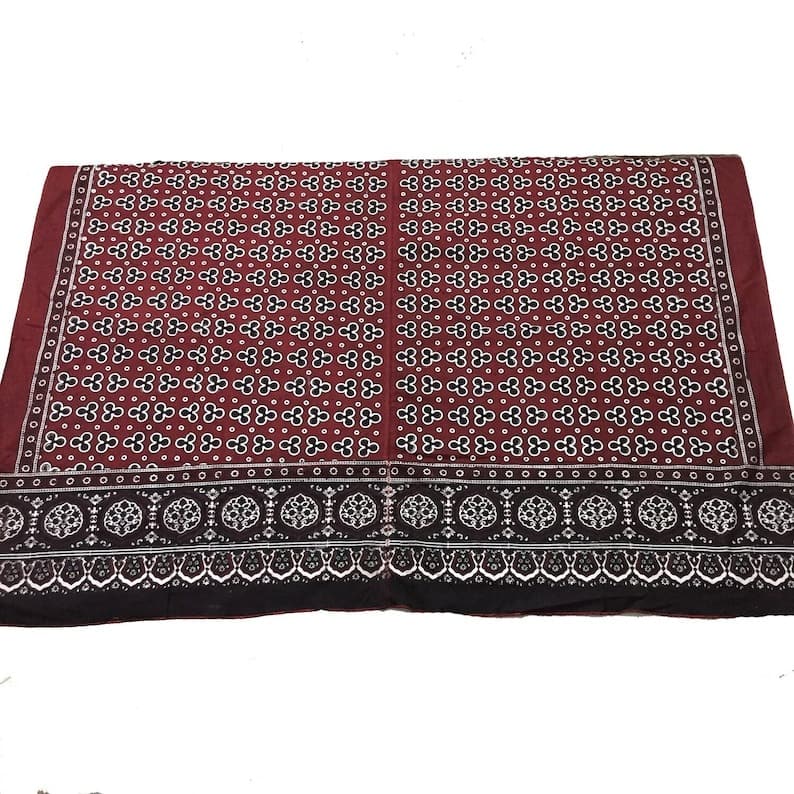
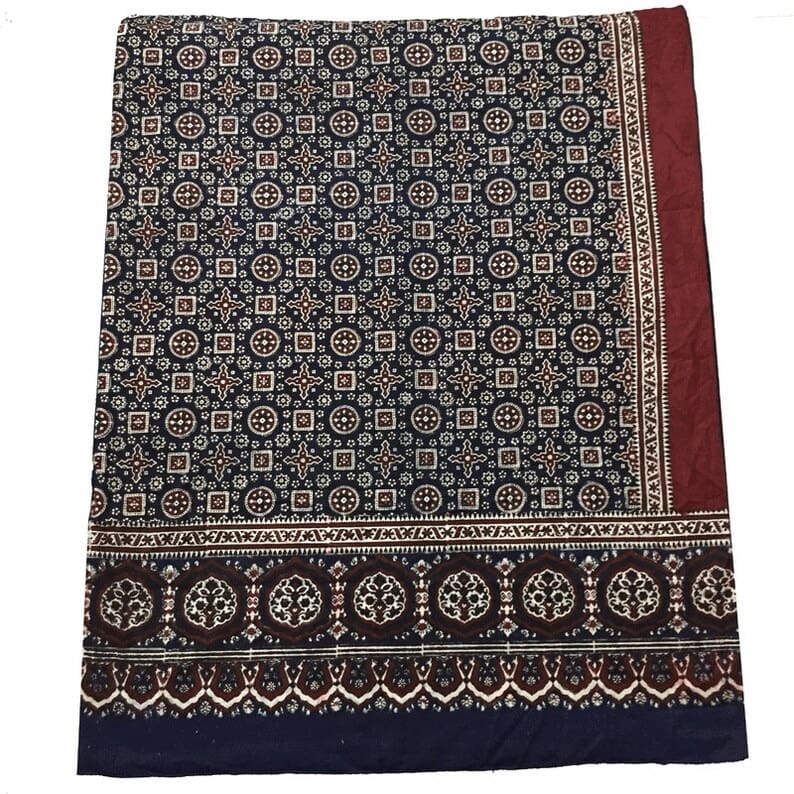
How The Authentic Artisans Survive the Industrial Era
To keep up with the competition and keep the art alive, Imran had to make some changes, and now they are also making other garments from the Ajrak fabric, like lady’s suits, saris, stoles, cushions, and more. Another change they started applying is selling directly to consumers instead of just to local shops; this makes them keep more of the profits.
Imran believes the Ajrak will survive because they have left their past limitations behind. He’s hoping the Ajrak will continue to be cherished by many future generations, and it seems like he is undoubtedly doing everything to ensure that!
Besides Imran, many other Ajrak makers are adapting themselves to the new era, here’s another interesting example of how an antique tradition can survive in modern times:
Ajrak In Current Fashion
The Ajrak designs are popular throughout Pakistan and India, but not only!
You might also recognize the Ajrak patterns from modern authentic-inspired garments.
As a fashion admirer, I met the Ajrak pattern long before I learned about its respected Sindhi heritage. This beautiful pattern is found in various garments worldwide, particularly dresses and blouses, that use traditional patterns and motifs to achieve a romantic charm.
And just like many other traditional garments, the Ajrak designs have spread out through the fashion world, unfortunately, often without the proper credit.
While researching to create this article, I came across an interesting article posted in the Pakistani E-Paper DAWN to make justice for the origin of the Ajrak:
“New York-based fashion brand Sea is selling a top they like to call ‘Ezri Sleeveless Top’ and they’ve described its color as ‘Brick Multi’ but if you ask us, it looks quite different from said brick multi. It looks like something else… Sea appears to have taken the ajrak-printed fabric, a prominent symbol of Sindhi culture, and simply chosen not to acknowledge its origins”.
As you can understand, the Ajrak is still one of Sindh’s beloved sources of pride. And just like any other traditional garment, I think its evolvement and inspirational influence is natural and great both for people all around the globe, who can enjoy this magnificent art, as well as for Sindh’s pride. But of course, proper credit should always be made.
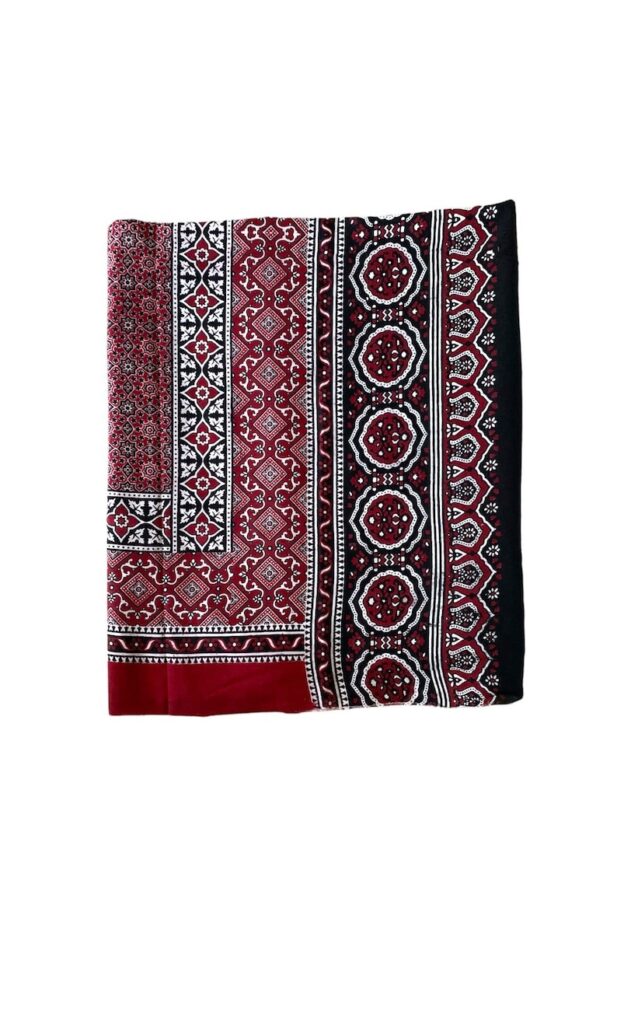
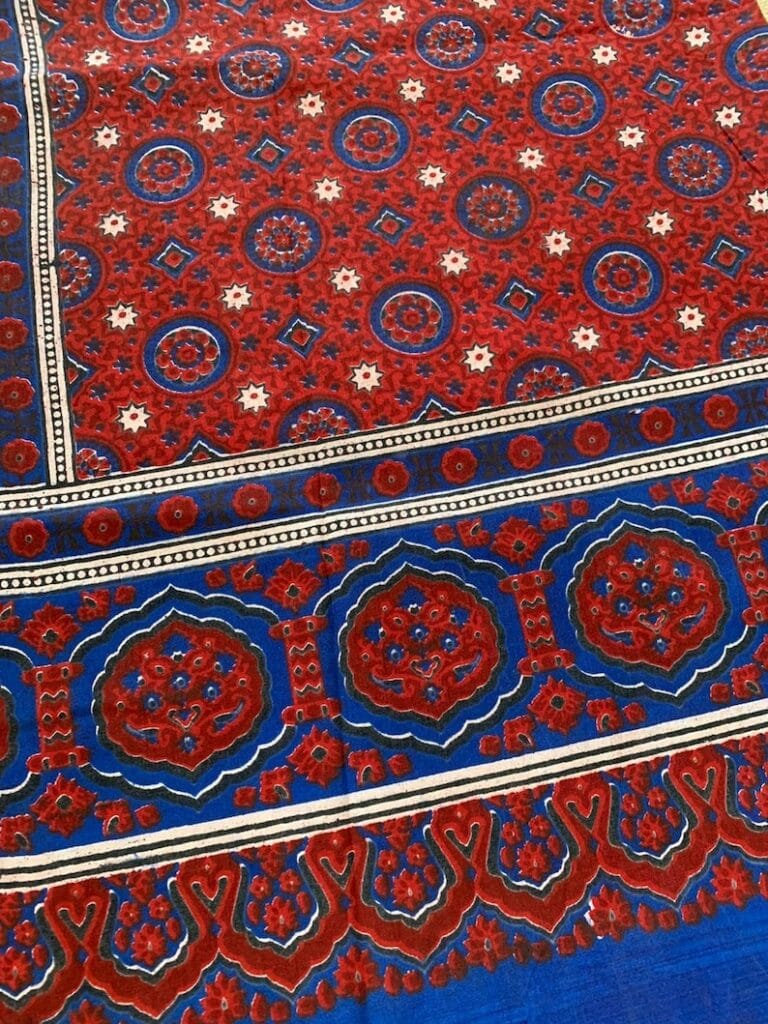
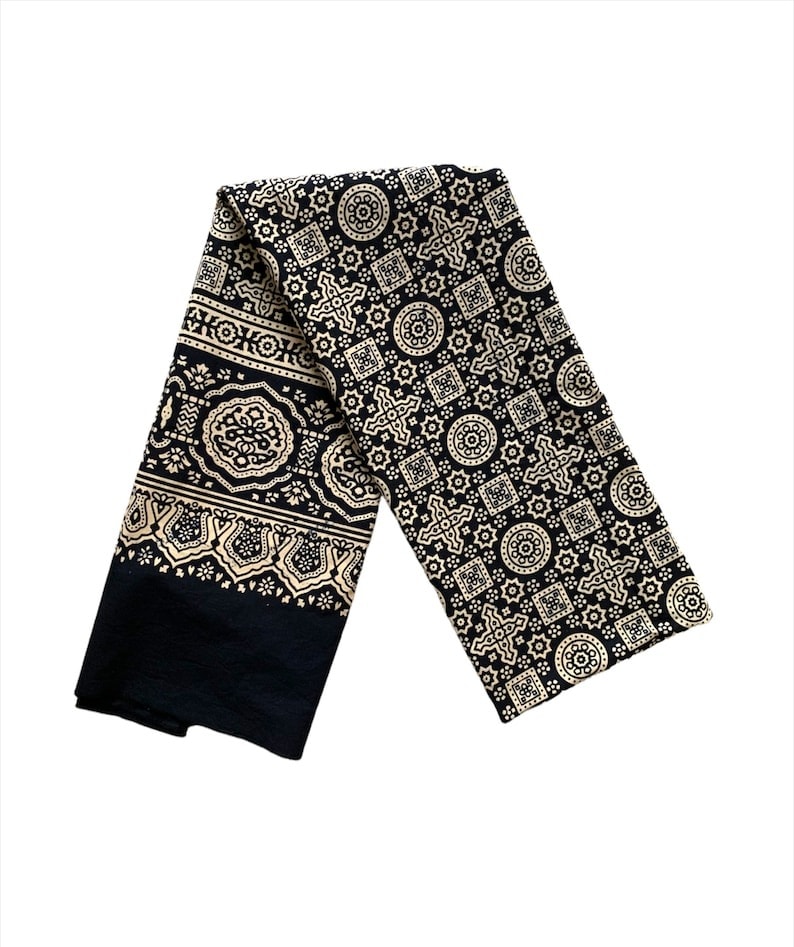
A Local Point-of-View
I contacted Kaneez, a young Pakistani woman, to get a closer look from a local angel. Kaneez, despite not being Sindhi herself, had an interesting acquaintance with Ajrak shawls, which sheds light on its current role in Sindhi culture:
“Although I do not belong to the Sindhi community, my childhood was spent in various parts of Sindh due to my father’s job as a government officer. My family frequently shifted homes, and I had the opportunity to live in small cities such as Kandiaro, Nawabshah, Hala, Badin, and Hyderabad for almost 10 years. During this period, I encountered an exciting tradition – every time an important occasion arose, my father would be gifted different types of Ajrak from local people. Additionally, he would be presented with a Sindhi Topi (Sindhi Cap) and an Ajrak shawl as symbols of honor and respect.
As a curious child then, I once asked him about these gifts, and he explained that it was because, in Sindh, it is customary to be hospitable and show respect towards guests. The Sindhi community strongly believes in hospitality and generosity when welcoming visitors into their homes or regions. Thus, gifting the Ajrak Shawl shows gratitude towards guests who may not even belong to their community”.
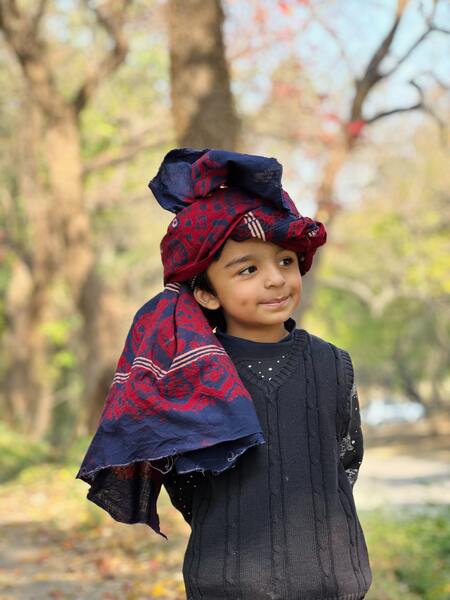
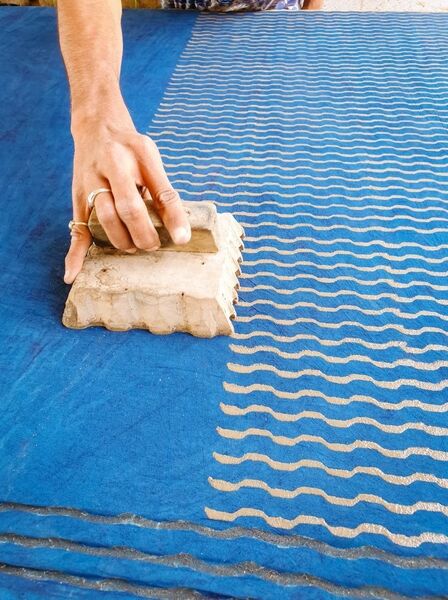
Wrapping Up!
The fantastic Ajrak art, deeply rooted in Sindhi history and culture, is more than a beautiful tradition. The unique patterns and designs have a lot to offer to the modern fashion world. And as a garment that signifies dignity, pride, and respect, it can serve as a perfect gift, not only for Sindhis!
Bonus: How to Wear Ajrak Shawl as a Headscarf
References
https://moomal.uk/inspiration/ajrak
https://www.dawn.com/news/882907/craftsmanship-the-making-of-ajrak

